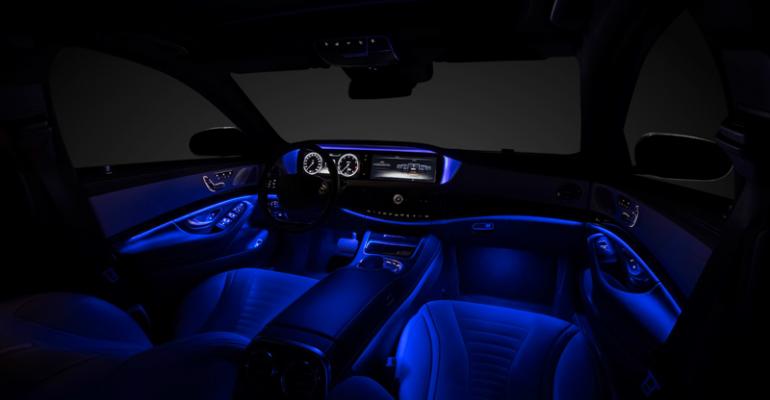TORONTO – Aiming to bolster its assertion the ’14 S-Class is the best car in the world, Mercedes-Benz claims its new flagship is first to offer a variety of breakthroughs related to safety, comfort and design.
Some new technologies represent significant trends destined to migrate to mainstream vehicles. Other “firsts,” such as a climate-control system that disperses perfume, are a bit on the frivolous side, catering to the tastes of the ultra-rich, many of whom will be chauffeured instead of sitting behind the wheel.
But all the new features on the ’14 S-Class demonstrate how far auto makers now have to reach to impress luxury car purchasers around the globe.
“Rather than being about safety or aesthetics, power or efficiency, comfort or dynamism, our aspirations were ‘the best or nothing’ in every respect,” says Daimler CEO Dieter Zetsche.
Among Mercedes S-Class new technologies:
- First car without light bulbs. The S-Class most notably is distinguished by a technology it does not have: conventional light bulbs. Light-emitting diodes are used for all exterior and interior lighting: up to 56 in headlamps, up to 35 in tail lights and about 300 in the cabin. LEDs save energy and offer more design flexibility and color options. The S-Class interior can be illuminated in as many as seven different colors, providing dramatically different effects.
- First anticipatory suspension. Boldly titled “Magic Body Control,” the S-Class offers a suspension option that uses stereo cameras to detect irregularities in the road ahead. The cameras send data to the car’s adaptive suspension system, which in turn reacts within fractions of a second to anticipate and adjust for upcoming bumps.
- First perfuming system. Lots of luxury cars offer sophisticated cabin air filtration systems to remove unpleasant outside odors, but the new S-Class offers what Mercedes claims is the industry’s first built-in perfuming feature that uses the climate-control system to disperse four different fragrances to suit your mood.
- First hot-stone massage. Car seats that massage the driver’s and passenger’s back now are almost mandatory in top-line luxury vehicles, so Mercedes cranks up the concept a couple of notches. It provides an in-seat massage system that uses 14 separately actuated air cushions to knead sore back muscles more vigorously than current mechanical systems. Plus, air bladders in the middle of the seat are equipped with heating elements that can deliver a sensation that mimics hot stones being placed on your back, like they do in a fancy spa.
- Autonomous driving features. Self-guided cars still are years away, but the new S-Class goes farther than any vehicle yet in taking some of the burden off drivers during emergencies and regular motoring. Its anticipatory safety system will detect pedestrians and initiate autonomous braking at speeds up to 31 mph (50 km/h), but it also has a thermal-imaging camera that can detect pedestrians and animals from long distances in the dark. It will automatically flash the headlights at humans to alert them, but not at animals. Engineers say the reaction of animals to light is unpredictable.
-
What’s more, the car’s sophisticated radar sensors also can recognize potential rear-end collisions. If the car is about to be rear-ended at a stoplight, the car automatically will apply the brakes and cinch up the seatbelts to minimize whiplash injuries.
-
The new S-Class also offers a self-driving feature that allows it to creep through stop-and-go traffic and even follow other cars through detours without driver assistance. At highway speeds, driver-assist systems will keep the car in its lane and even follow gradual curves without hands on the wheel – for about 10 seconds.
-
After that, a visual indicator flashes on the instrument cluster reminding the driver to grab the wheel, followed by an audio signal. Once hands are on the wheel, they can be removed again.





